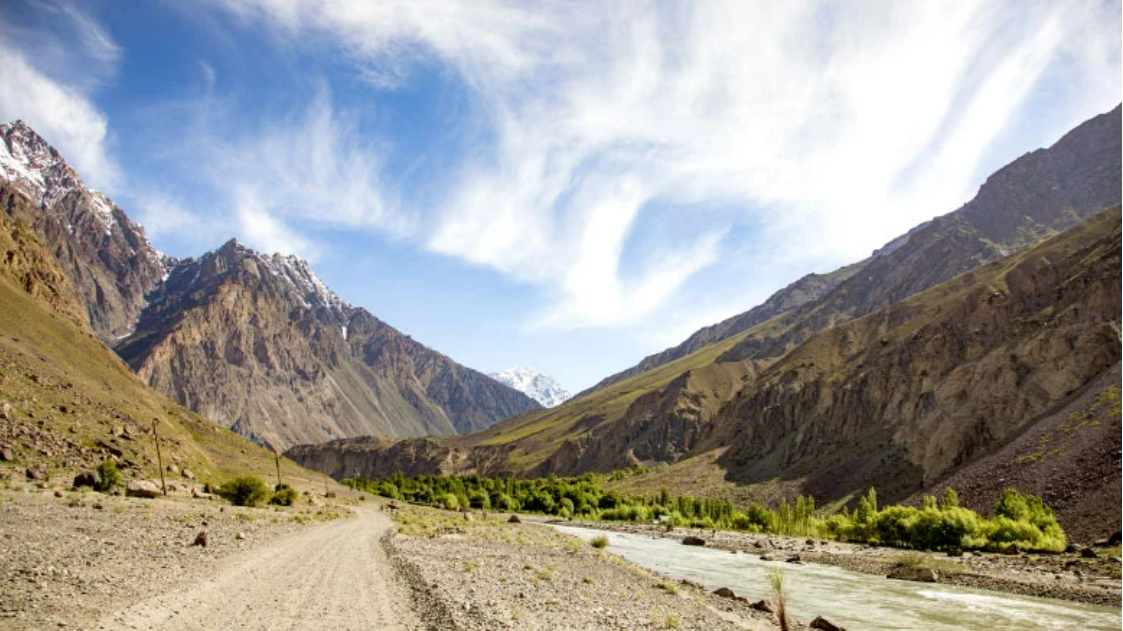Strengthening Critical Infrastructure Against Natural Hazards Project: Tajikistan

Summary
The objectives of the Strengthening Critical Infrastructure Against Natural Hazards Project for Tajikistan are to strengthen Tajikistan’s disaster risk management capacities, enhance the resilience of its critical infrastructure against natural hazards, and improve its capacity to respond to disasters.
Given its high mountain terrain, geology, climate and hydrological features, Tajikistan is highly prone to natural disasters and has a long history of severe floods, earthquakes, landslides, mudflows, avalanches, droughts, and heavy snowfalls. The social and economic impacts from such disasters are significant and remain a persistent obstacle to poverty reduction and sustainable development. During 1992–2016, economic losses from natural disasters cost Tajikistan an estimated $1.8 billion, affecting almost seven million people. Climate change is expected to exacerbate this, with Tajikistan facing more intense glacier melting and extreme weather events. It ranks first in terms of vulnerability to climate change in Europe and Central Asia.
In 2017 the World Bank allocated a credit of $25 million and a grant of $25 million to Tajikistan to help protect lives and livelihoods from natural disasters, increase resilience to climate change and strengthen local capacity to manage disaster risk. With this support, Tajikistan is rebuilding key infrastructure in two regions, Khatlon and Gorno-Badakhshan Autonomous Oblast (GBAO), which suffered major floods and mudflows in July 2015.
There are three components to the project, the first component is strengthening the Government of Tajikistan’s capacity for disaster risk management (DRM) through selected activities that focus on disaster risk identification, disaster preparedness, and financial protection against disasters. This includes construction of a national crisis management center and installation of associated ICT systems. The second component is making critical infrastructure resilient against natural hazards. This component finances capital works and contingency planning (for example, procurement of equipment for managing hazards) for the transportation network in GBAO, which suffered the most significant damage in July 2015, as well as the flood protection infrastructure that has repeatedly been damaged in the Khatlon Oblast. The third component is a contingent emergency response component to enhance Tajikistan’s capacity to respond to disasters. An emergency eligible for financing is an event that has caused, or is likely imminently to cause, a major adverse economic and/or social impact to the Borrower, associated with a disaster.
Overview
- Location:
- Implementation sites:
-
- Single country
- Multiple locations
- Mountain region:
-
Gorno-Badakhshan Autonomous Oblast
- Province:
-
- Khatlon and Gorno-Badakhshan Autonomous Oblast
- Solution scale:
- Ecosystem type(s):
- Solution type(s):
- Sector(s):
- Climate impact(s) addressed:
- Climate impact time-scale(s):
- Main benefit associated with the solution:
- Co-benefit(s) associated with the solution implementation:
- Implementation timeline:
-
- 2017 - 2023
Solution details
Main beneficiaries & outcomes
The project aims to strengthen the country’s capacity to prepare for, mitigate, and respond to natural disasters. Therefore, the main beneficiaries of the project are members of local communities in the locations where the project is conducted. With the solution in place, the project aims to reduce disaster risks through more resilient flood protection and riverbank erosion prevention infrastructure and more resilient bridges, benefitting over 600,000 people. The solution is relevant to all members of the local communities.
In addition, the project aims to establish a National Crisis Management Center. This could benefit the entire country and support in preparing for, mitigating, and responding to natural disasters.
Planning and implementation
As a government-executed project, the bridges were designed and constructed by the Ministry of Transport (MoT) and the flood protection embankments by the Agency for Land Reclamation and Irrigation (ALRI). Construction of the National Crisis Management Center and installation of associated information and communication technology systems is being performed by the Ministry of Finance in close coordination with the Committee of Emergency Situations and Civil Defense. International and national design firms, construction companies, and experts supported the implementing agencies throughout the project.
Finance
In 2017 the World Bank allocated $50 million from the International Development Association (IDA), in the form of a credit of $25 million and a grant of $25 million to Tajikistan, to help protect lives and livelihoods from natural disasters, increase resilience to climate change and strengthen local capacity to manage disaster risk.
Innovation
- Bridge and flood embankment designs were informed by modern hazard and risk assessments and utilized advanced engineering solutions, employing a more resilient design requiring less maintenance.
- Formulation of gender indicators to be incorporated into the project’s monitoring, reporting and verification system.
- Aiming to establish a National Crisis Management Center and training users to operate the mobile command and communication vehicles.
- Developing a financial protection strategy to facilitate response and recovery in the event of an emergency.
Performance evaluation
As the project is ongoing until December 2023 a final evaluation has not been conducted; however, a baseline and mid-line evaluation were conducted.
As of November 2022, 17 out of 18 targeted bridges had been constructed, 450,900 out of 556,900 target number of people had reduced disaster risks due to more resilient flood protection and riverbank erosion prevention infrastructure, and the National Crisis Management Center and systems had not yet become operational.
To see the full list of indicators being assessed and the relevant information, please see the semi-annual implementation status report.
Long term project sustainability and maintenance
By working with the Government of Tajikistan and local authorities the project is helping to build capacity and increase knowledge in resilient flood protection and riverbank erosion prevention infrastructure, as well as in establishing and maintaining crisis management systems. Therefore, once the project is finished the Government of Tajikistan should be able to continue to effectively operate and maintain the infrastructure and National Crisis Management Center.
Capacities for design and implementation
Knowledge
The World Bank has an extensive portfolio of projects in Tajikistan, and worldwide, and are working closely with the Government of Tajikistan on this project. The project will benefit from the local knowledge and understanding of the Government of Tajikistan, and in particular the implementing agencies. In addition, the project has priotitized hiring people locally to help construct the resilient infrastructure, thereby supporting those to gain an understanding of the work being conducted, in addition to supporting local livelihoods.
Political / Legal
The Government of Tajikistan and the World Bank are conducting the project with the aim to protect the population and people’s livelihoods from the impacts of natural disasters and climate change risks, by improving the national capacity to effectively mitigate and respond to natural disasters.
Outlook & Scalability
Barriers and adverse effects
The biggest challenge to the project has been the COVID-19 pandemic but despite the associated closed borders (causing challenges to import construction equipment and goods) and disruptions to markets (sometimes causing limited supplies and high costs of construction goods), the implementing agencies managed to proceed in implementing the project.
Flood embankment rehabilitation faced some delays due to high river flows particularly during the snowmelt seasons in 2021 and 2022, which meant construction activities had to be suspended until the flows reduced (and in some cases coffer dams were destroyed).
In addition, whilst local communities were supportive, a few directly impacted people had to be compensated for construction-related losses.
Transformation and future outlook
The project procured heavy equipment for the implementing agencies to support maintenance of critical infrastructure. Whilst maintenance plans are in place it is unclear if the recurrent budget will be sufficient to support these.
Potential for upscaling and replication
The potential for scaling up and replication of the project is positive, with the Government of Tajikistan and World Bank having already initiated a follow-up project: Preparedness and Resilience to Disasters.
- Protecting Lives and Livelihoods from Natural Disasters in Tajikistan (2022)
- Strengthening Critical Infrastructure against Natural Hazards
- Tajikistan Aims to Better Protect People and Property from Natural Disasters and Climate Change (2017)
- Tajikistan is Protecting People and Livelihoods from Disasters with World Bank Support




Comments
There is no content